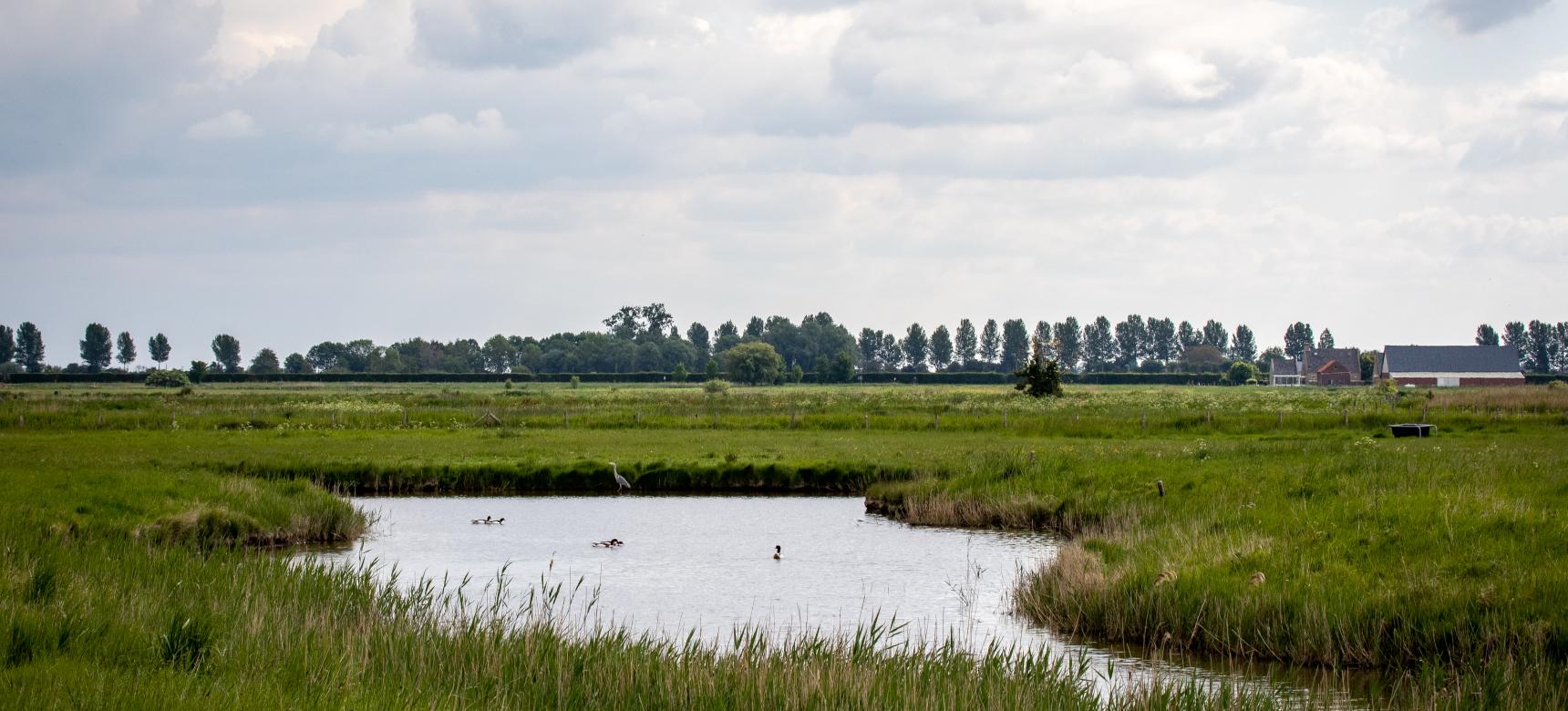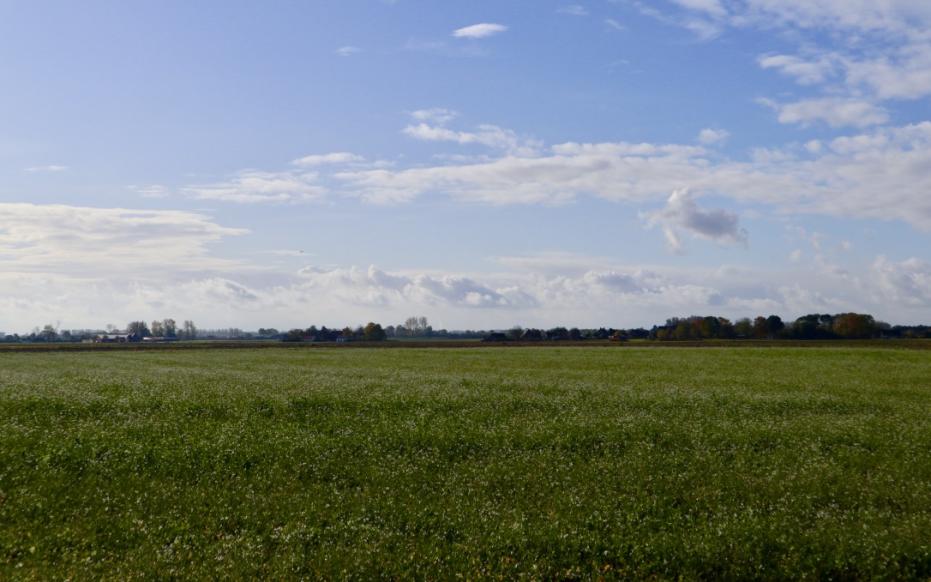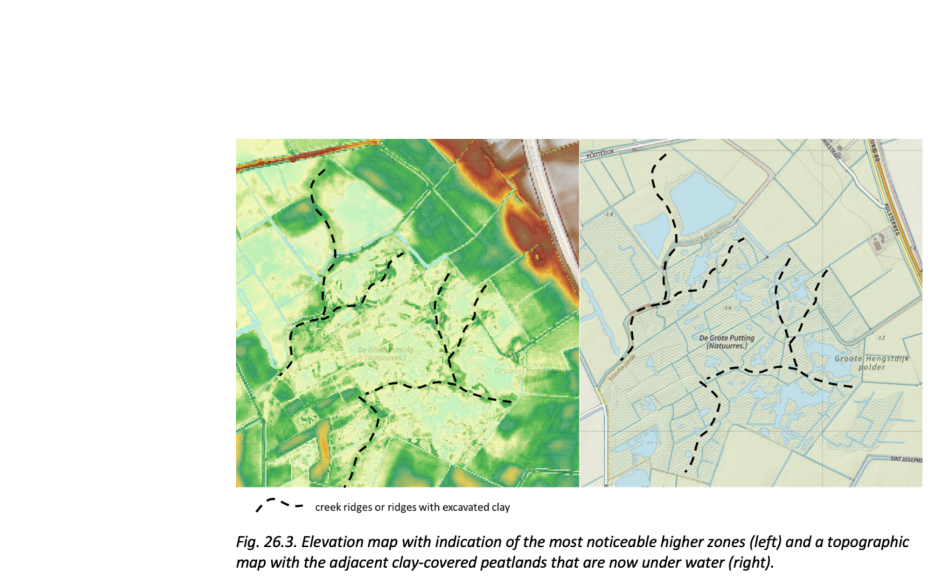Oudland
The exact time of construction of the Hengstdijkpolder, in which De Putting lies, is unknown, but lies at least before 1161 A.D. Since then, the area has hardly been inundated by the sea. This type of land is also called Oudland. This makes the Hengstdijkpolder one of the oldest polders in Zeeuws-Vlaanderen. In De Putting, the capricious relief of the Oudland is still partly preserved. The differences in height in this case may have several causes. Higher ridges in the landscape are either small creek ridges, or strips of clay that were placed as walls next to the marsh pits during excavation.


